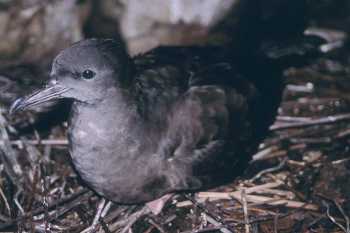Jacopo Cecere (Institute for Environmental Protection and Research, Ozzano dell'Emilia, Italy) and colleagues write in the journal Waterbirds on foraging grounds of Wedge-tailed Shearwaters Puffinus pacificus in the Seychelles.
The paper’s abstract follows:
“Seabird movements during foraging trips and their preference for particular areas have recently been the focus of many studies aimed at gaining a better understanding of the ecological requirements of several species. During the last decade, the use of new devices, such as Global Positioning System (GPS) devices and geo-locator loggers, has allowed researchers to perform more investigations of this type. GPS devices were used on Wedge-tailed Shearwaters (Puffinus pacificus) breeding on Aride Island, Seychelles, to identify the main foraging areas used during early chick-rearing and to assess at-sea foraging habitat selection. Thirteen foraging trips were recorded, 61.5% of which lasted 1 day. One main foraging area, located approximately 100 km east of the colony just outside a granitic bank characterized by upwelling and higher values of primary production compared to surrounding areas, was identified. The foraging area size (3,313 km2) was much smaller than that identified during late chick-rearing (160,000 km2) in a previous study. This is probably due to the exigency to feed chicks more regularly and hence to find foraging areas closer to the colony during the early chick-rearing. The identification of key marine conservation areas, like those identified in this study, is a priority for designating marine Important Bird Areas and identifying habitat management measures. The results of this study should be relevant for the development of conservation plans for Wedge-tailed Shearwaters and for other seabirds in the area.”

Wedge-tailed Shearwater in the Seychelles, photograph by Alan Burger
Reference:
Cecere, J.G., Calabrese, L. Rocamora, G. & Catoni, C. 2013. Movement patterns and habitat selection of Wedge-tailed Shearwaters (Puffinus pacificus) breeding at Aride Island, Seychelles. Waterbirds 36:c432-437. doi: .
John Cooper, ACAP Information Officer, 06 February 2014

 English
English  Français
Français  Español
Español